Your browser is out-of-date!
Update your browser to view this website correctly. Update my browser now
Artist Timeline
Robert Motherwell’s life was marked by extraordinary accomplishments as an artist, and widespread acknowledgment as an important cultural figure who emerged as the leading spokesperson for a whole generation of innovative American artists. During his fifty-year career, he formed deep friendships with many artists and writers and was passionately committed to the idea of Modernism, to what he called “shaped meaning,” with its attendant sense of freedom from outmoded social and artistic conventions.
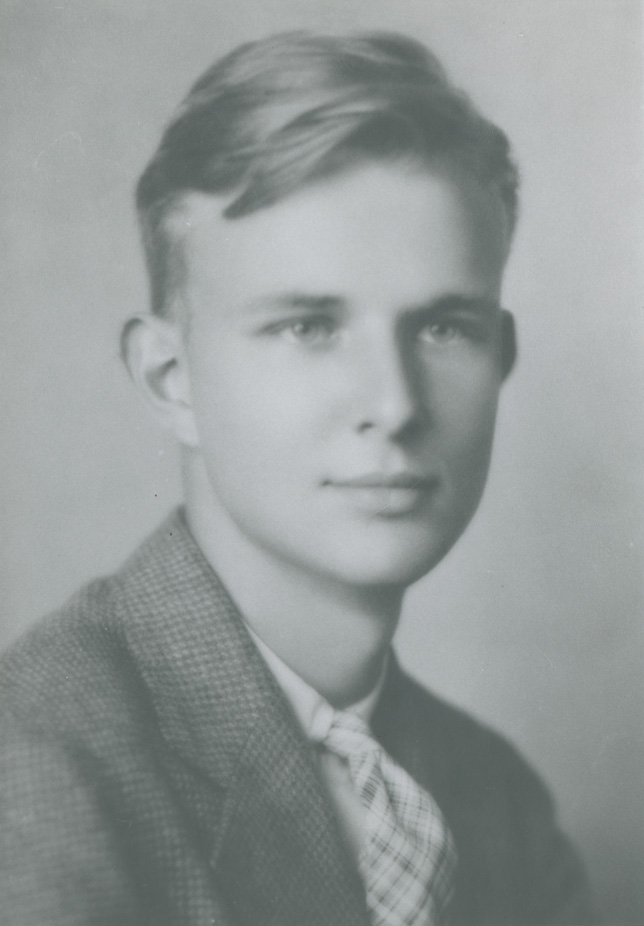
Motherwell, who grew up on the west coast, was deeply involved with painting and drawing throughout his early years. At Stanford University, he studied philosophy and literature, and then went on to do graduate work in philosophy at Harvard. He spent the 1938—39 academic year in France, ostensibly to work on his master’s thesis, but became increasingly committed to painting. In 1940, he moved to New York to study art history at Columbia University, but by the end of that year he decided to dedicate himself to painting.
view more
1915 - 1939
Motherwell, who grew up on the west coast, was deeply involved with painting and drawing throughout his early years. At Stanford University, he studied philosophy and literature, and then went on to do graduate work in philosophy at Harvard. He spent the 1938—39 academic year in France, ostensibly to work on his master’s thesis, but became increasingly committed to painting. In 1940, he moved to New York to study art history at Columbia University, but by the end of that year he decided to dedicate himself to painting.
view more
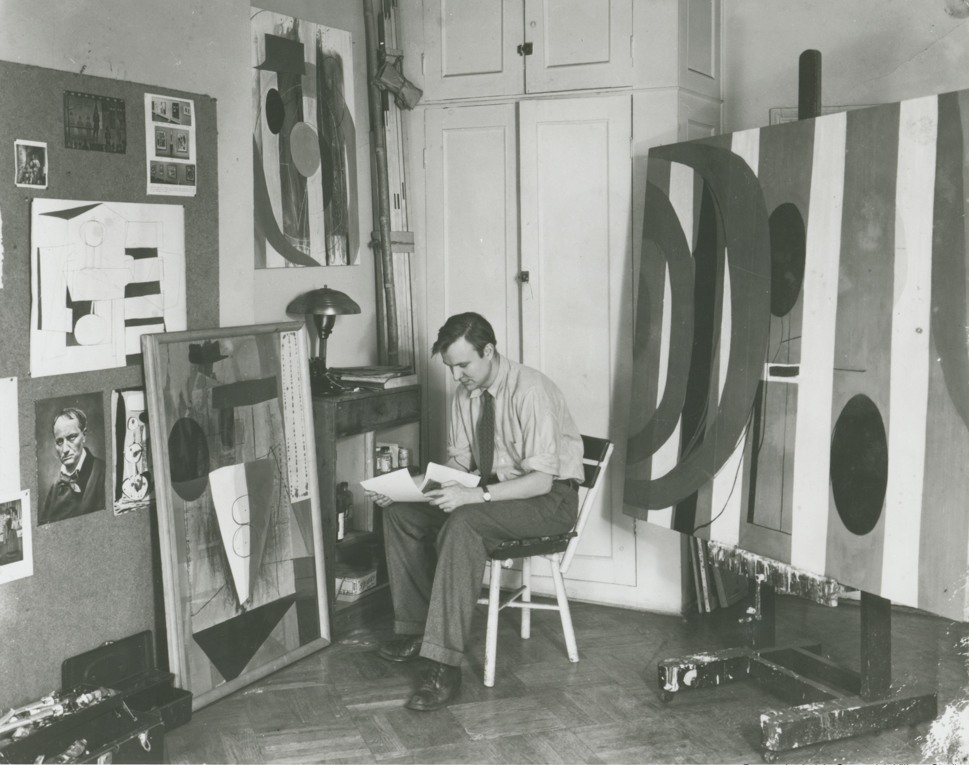
Motherwell’s discovery in 1941 of the Surrealist technique of psychic automatism provided him with a means of generating inventive forms, of liberating himself from habit and inhibition, and of probing deeply within himself and finding his inner voice. He became engaged with abstract figuration, abstraction, and collage early in his career, when he came to understand the profound ways in which both abstraction and collage could express the realities of modern life.
view more
1940 - 1948
Motherwell’s discovery in 1941 of the Surrealist technique of psychic automatism provided him with a means of generating inventive forms, of liberating himself from habit and inhibition, and of probing deeply within himself and finding his inner voice. He became engaged with abstract figuration, abstraction, and collage early in his career, when he came to understand the profound ways in which both abstraction and collage could express the realities of modern life.
view more
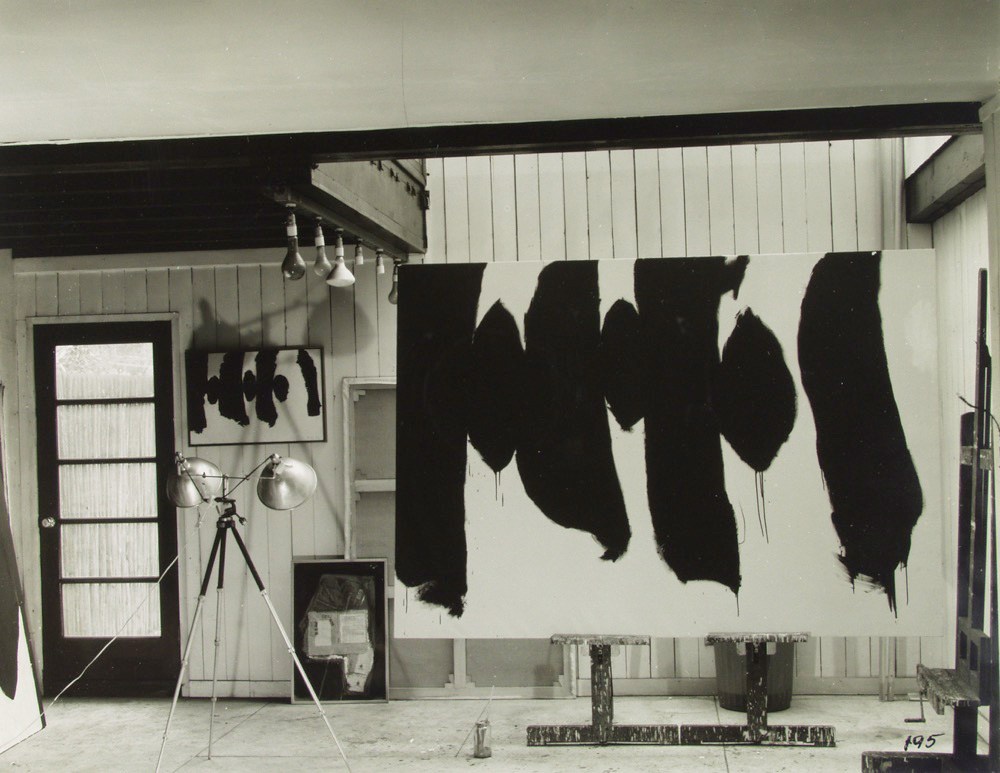
Motherwell created his first Elegy paintings during the winter of 1948—49. Although the Elegies soon became one of his most famous images, which he would work with for the rest of his life, at the same time that he created variations on the Elegy format he also developed a number of other signature images, including the Je t’aime paintings and a broad range of collages, in which he employed both cut and torn papers.
view more
1948 - 1957
Motherwell created his first Elegy paintings during the winter of 1948—49. Although the Elegies soon became one of his most famous images, which he would work with for the rest of his life, at the same time that he created variations on the Elegy format he also developed a number of other signature images, including the Je t’aime paintings and a broad range of collages, in which he employed both cut and torn papers.
view more
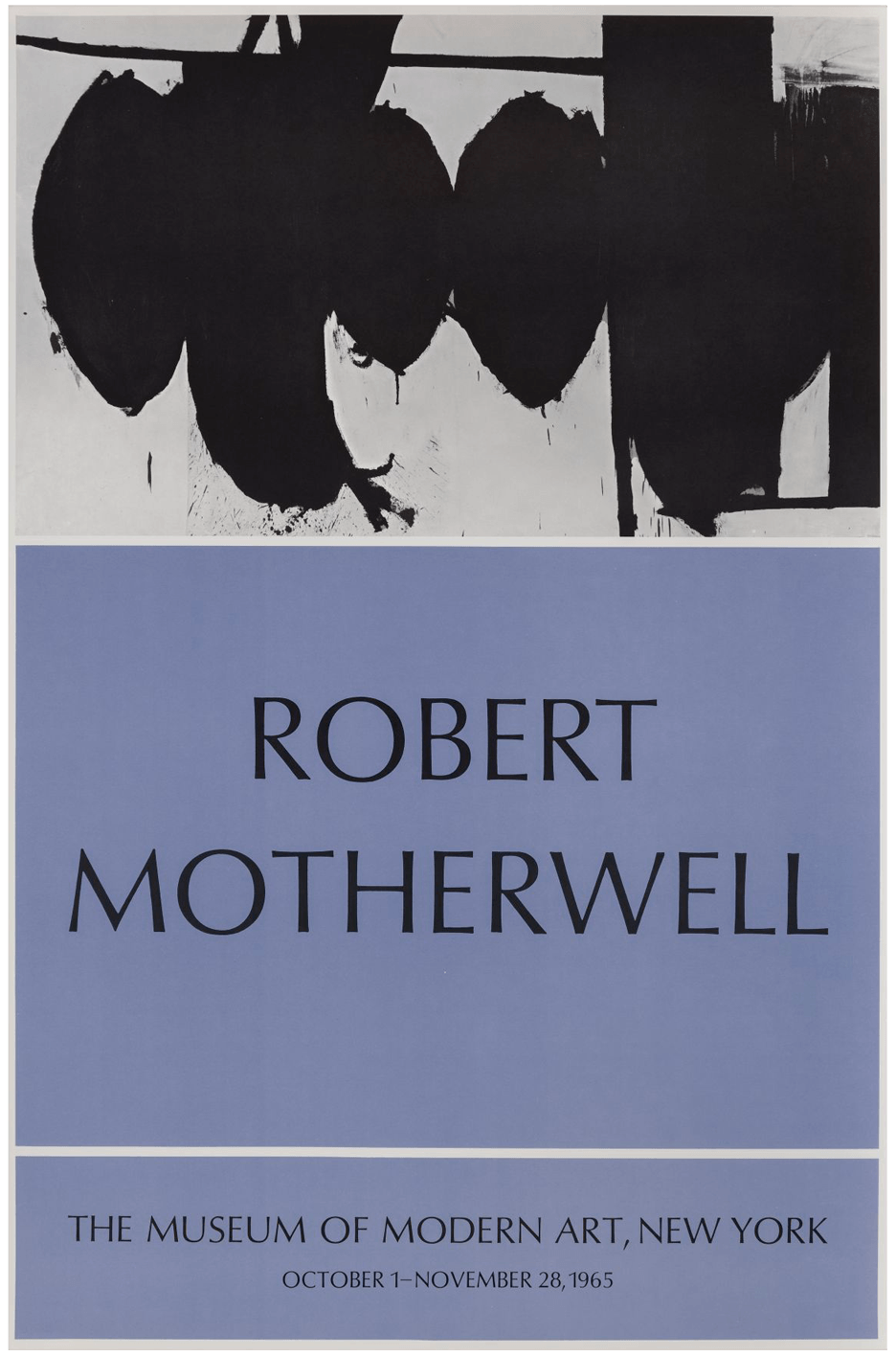
During a 1958 sojourn in Spain and France, Motherwell developed his stark and somber Iberia paintings and in the following years further expanded the range of his imagery. Inspired in part by his marriage to Helen Frankenthaler, he did a number of large stain paintings and created the spontaneously executed Beside the Sea and Lyric Suite series. During this period, his work gained wide recognition and he was given solo exhibitions at major museums.
view more
1958 - 1966
During a 1958 sojourn in Spain and France, Motherwell developed his stark and somber Iberia paintings and in the following years further expanded the range of his imagery. Inspired in part by his marriage to Helen Frankenthaler, he did a number of large stain paintings and created the spontaneously executed Beside the Sea and Lyric Suite series. During this period, his work gained wide recognition and he was given solo exhibitions at major museums.
view more
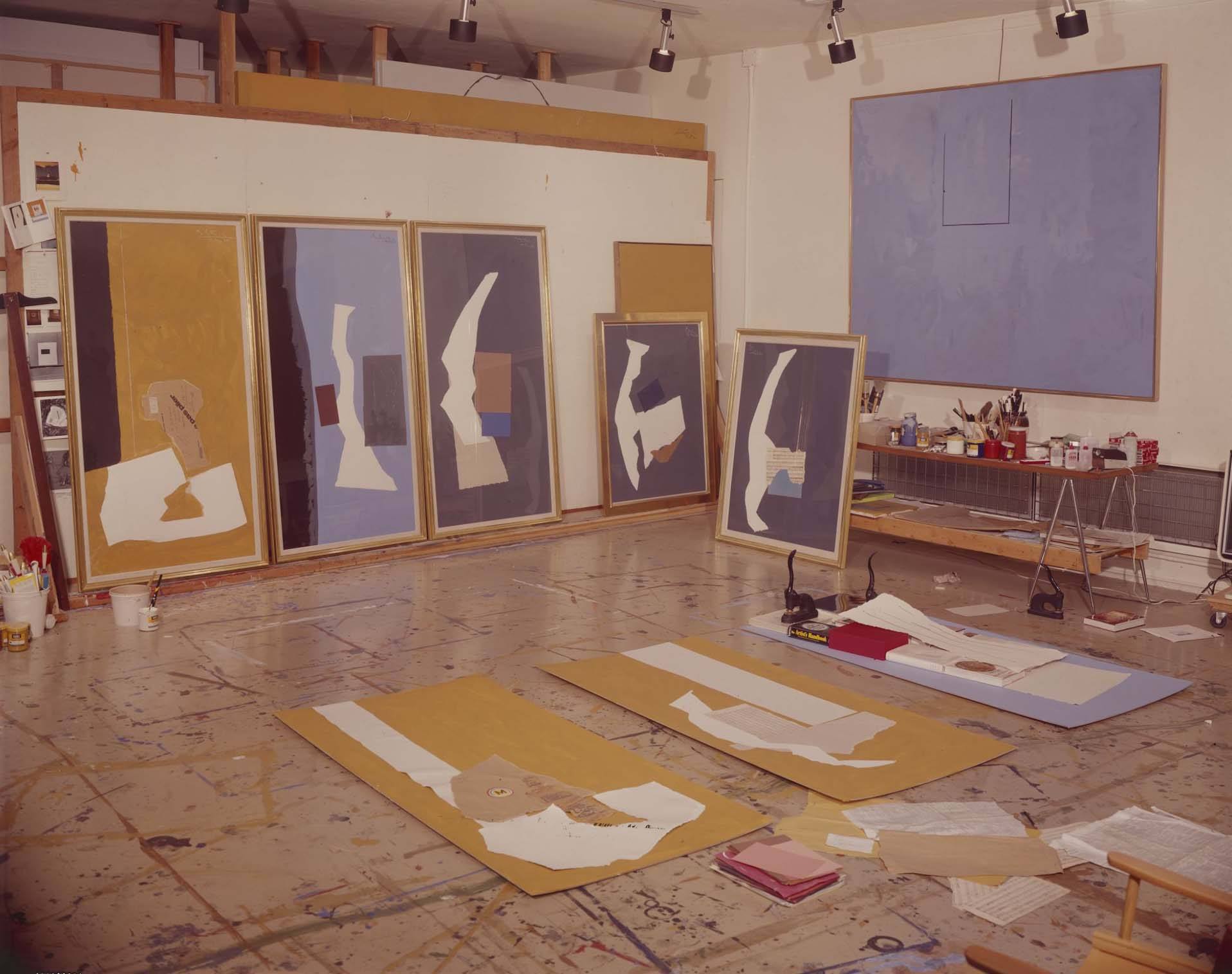
Motherwell’s Open imagery began as an austere series of paintings that employed rectangular forms drawn in charcoal over beautifully modulated painted grounds. During the 1970s, he created a number of variations on the Open motif, which were also reflected in his new series of collages, and his increasing involvement with printmaking. Following his move to Greenwich, Connecticut, in 1970, he constructed separate studio spaces for different aspects of his production: a large painting studio and separate studios for his work on collages and printmaking.
view more
1967 - 1979
Motherwell’s Open imagery began as an austere series of paintings that employed rectangular forms drawn in charcoal over beautifully modulated painted grounds. During the 1970s, he created a number of variations on the Open motif, which were also reflected in his new series of collages, and his increasing involvement with printmaking. Following his move to Greenwich, Connecticut, in 1970, he constructed separate studio spaces for different aspects of his production: a large painting studio and separate studios for his work on collages and printmaking.
view more
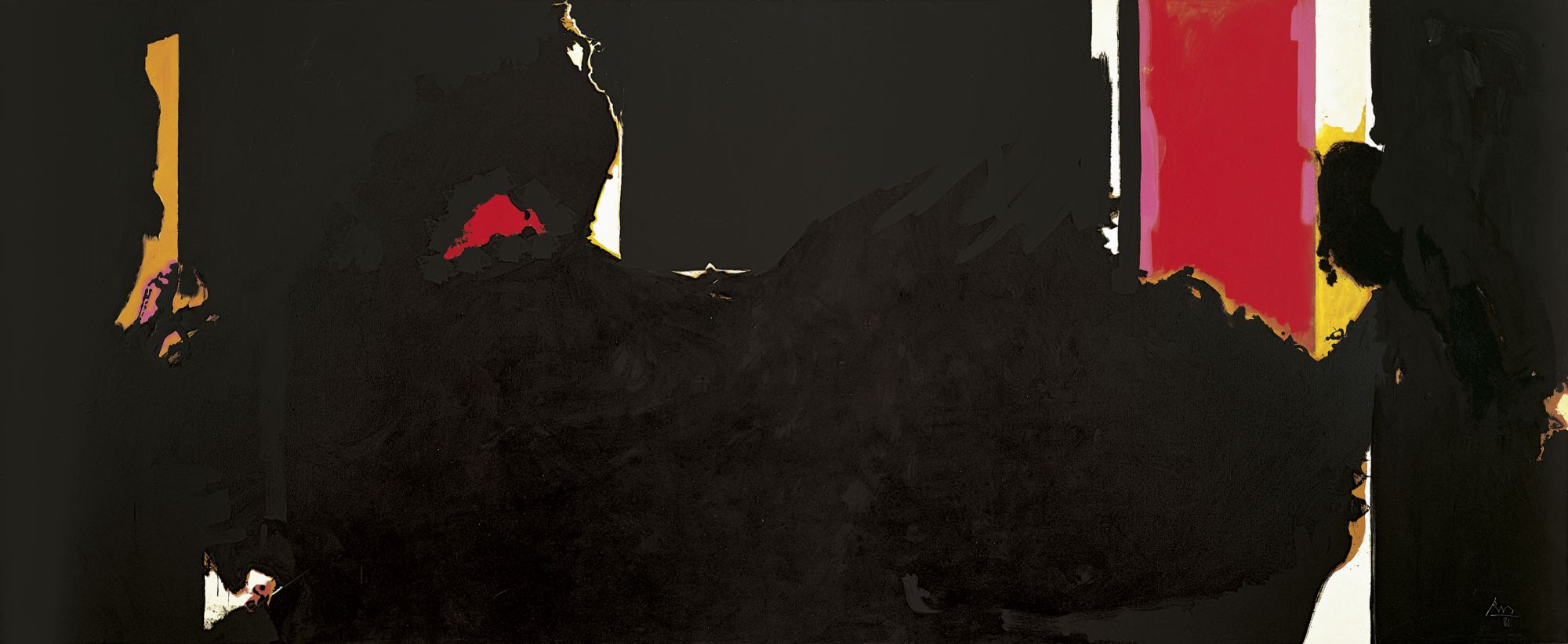
During the last decade of his life, Motherwell continued to challenge himself and to innovate. He continued some of his earlier series, creating monumental Elegies and inventive variations on the Opens, and also began to work on new imagery, as in the Hollow Men series, and in large and resonant late paintings such as The Face of the Night (for Octavio Paz), The Golden Bough, and The Grand Inquisitor. Motherwell continued to work prolifically until his death in July 1991.
view more
1980 - 1991
During the last decade of his life, Motherwell continued to challenge himself and to innovate. He continued some of his earlier series, creating monumental Elegies and inventive variations on the Opens, and also began to work on new imagery, as in the Hollow Men series, and in large and resonant late paintings such as The Face of the Night (for Octavio Paz), The Golden Bough, and The Grand Inquisitor. Motherwell continued to work prolifically until his death in July 1991.
view more
